Building Green: How to Design a Healthier Landscape
http://decor-ideas.org 08/08/2015 22:13 Decor Ideas
In this segment of Building Green, landscapes take center stage as we investigate how you can help make a difference toward a healthier planet. When planning or updating your landscape, there are many ways you can be more environmentally considerate. You may wish to implement all or just a few of these ideas — any one of them can make a difference when everyone contributes. It can be as simple as collecting rainwater in a barrel or as complex as installing sophisticated irrigation systems that you control with a smartphone. Below are a handful of ideas to spark your creative juices.
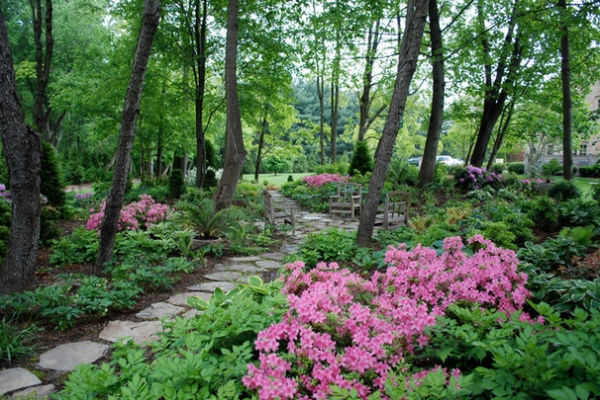
The Right Plants for Your Landscape
Your location will influence most of your decisions about what is suitable for your patch of land. Lush and green terrains like the one in the Washington, D.C., area, above, have different considerations than a dry or drought-prone landscape like the one in San Diego, below. But no matter where you live, some general rules of thumb apply.
Avoid invasive plants. Beware of trees that spread aggressive roots or shrubs that will grow too large for the location in which you plant them.
Avoid plants that require excessive shearing. Landscape maintenance ultimately requires the use of tools and services that consume energy to get the job done, whether that be workmen to drive to your location or equipment that burns fossil fuels.
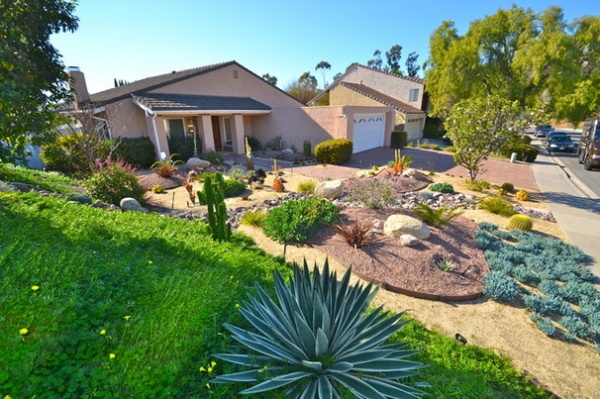
Use native species. Most areas offer plenty of choices in native planting material. You will want to use them for most if not all of your landscape. They will probably do better than non-native plants.
Use drought-tolerant plants. It’s especially important to use low-water plants in the Southwestern United States. But drought-tolerant plants can save water and reduce your utility bill no matter where you live.
Find native plants for your region
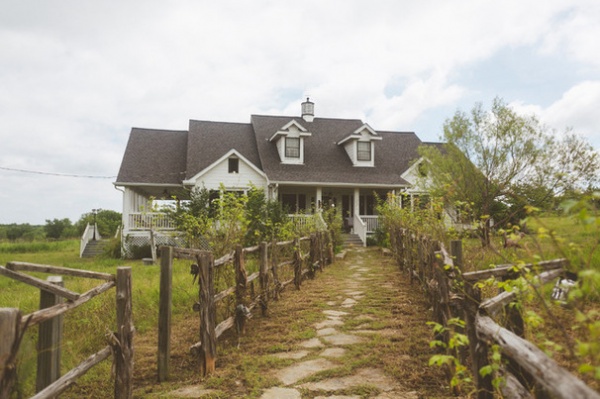
Natural Terrains
If you own a big property, you may realize that you need to landscape only a portion of it. The residence above is on 6 acres of beautiful land in the Texas Hill Country. The area is known for its rolling hills and vistas across countryside filled with cedar, mesquite and an occasional large oak. These homeowners have left the grassland untouched. Doing this often yields extraordinary wildflowers, such as bluebonnets, in the spring. The path to the front porch is modestly paved with random steppingstones, with grass growing between them to allow rainwater to soak in. A charming, rustically constructed low fence helps define the route.
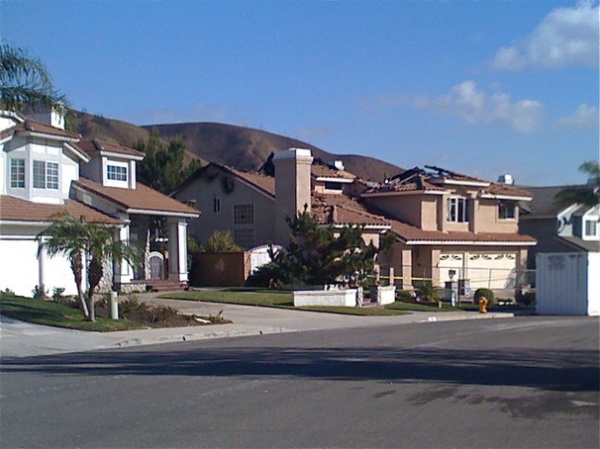
Wildfires
Most people are familiar with scenes on the news of California brush fires that sometimes consume hundreds of homes. But fire can strike anywhere.
In 2008, a wildfire began in the hills beyond this California suburban neighborhood. It lifted burning embers hundreds of feet above homes, some of which ignited and were lost. On this street of about 50 houses, this was the only one that burned. The scenario was repeated throughout the community, ultimately destroying about 200 houses. Here are a few steps to help you protect your home from fire:
Maintain a safe radius. Anything within 100 feet of your house that catches fire can easily spread to the underside of eaves, to patio structures and to flammable plant material. Firewood stored within 30 feet of your house may be a fire hazard. You may not be able to keep flammable material completely off your property, but keeping it as far from the structure as possible is the best alternative.
Choose fire-resistant plantings. Some types of plants, such as eucalyptus, contain oils that are highly flammable. Avoid planting them if you live in a fire-prone area. Space out trees so that a group doesn’t ignite into a large fireball.
Trim low-hanging branches. Fire can spread most quickly through dry grass and low brush. Cut away low-hanging tree limbs to prevent the easy spread of flames into higher foliage. Keep the brush clipped back as well.
Keep roofs clear of debris. Leaves that collect and dry up on roofs and gutters are like kindling. Keep such surfaces clear of dried plant material.
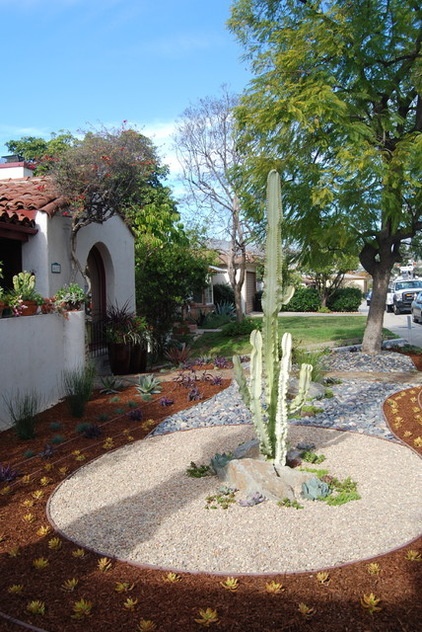
Lawns
While lawns are great in wet climates where rain keeps them going through the summer, they still need to be clipped, fertilized and kept free of pests. That takes equipment and manpower. You might consider leaving your landscape more natural.
In the Los Angeles yard at left, mulch, stone and gravel beds combine in delightful variation, expressing the textures of the materials. The entrance walk is a flagstone path laid into sand. Drought-tolerant succulents and cactuses round out the theme, while a mature bougainvillea and trees have been closely trimmed to work with the new landscape.
Below, a portion of this garden in Boston has been reserved for a mulch bed with shrubs and flowering plants, rather than giving it all over to a traditional lawn.
Avoid planting lawns on hillsides that slope more than 10% as they can be problematic. You may be able to plant a hearty bed of ivy instead.
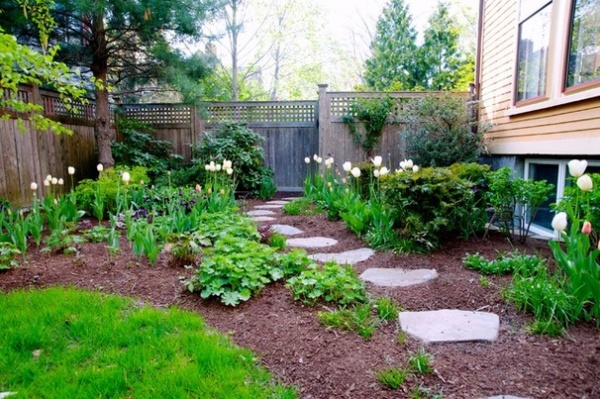
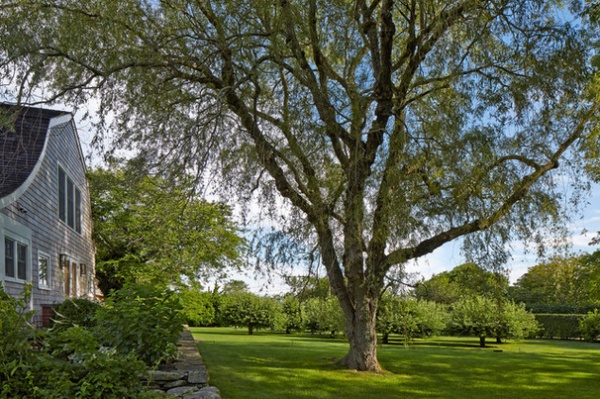
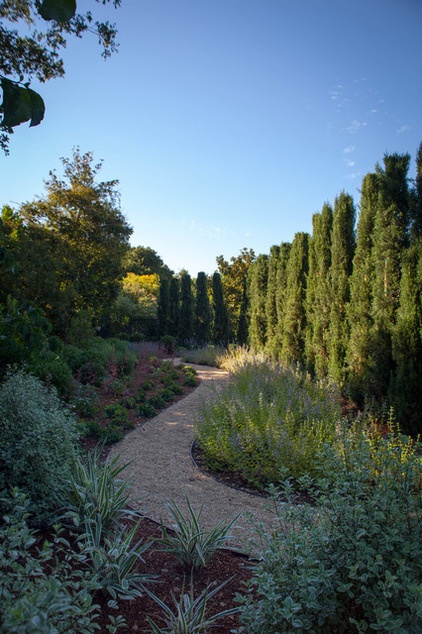
Shade Trees
Keeping fire prevention in mind, you might consider shade trees to protect your house from sun in the summer, as this tree does at a New York residence, above. Deciduous varieties can serve a complementary purpose in the winter, as their lack of leaves allows the sun to warm the house during that time of year. In more temperate climates, consider tall species such as Italian cypress to cast a long shadow from the setting sun, for example. They can also act as a visual screen, as seen with the San Francisco residence at left.
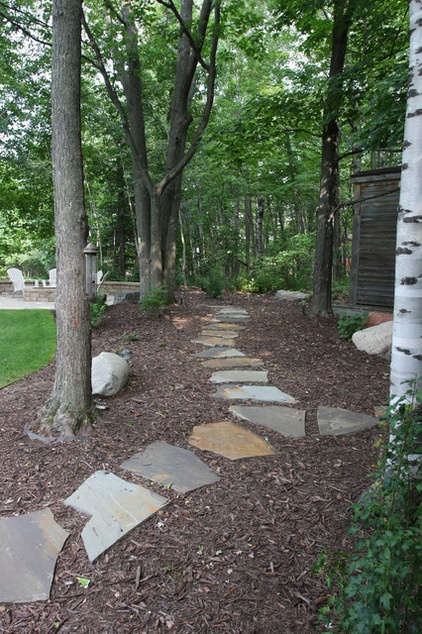
Mulch
Construction projects are notorious for contributing to unwanted erosion. If you have places where the grass doesn’t thrive, consider mulch as an alternative. Also place mulch around new plantings so the soil stays in place until the plants mature.
Habitats
Bees are essential to ecosystems across the planet. Protecting homes for them, birds, turtles and other creatures that inhabited your property before humans moved in is part of the larger equation and deserves your attention as well. Carefully research pest-control options to ensure that you’re supporting a healthy environment for all creatures — and your children.
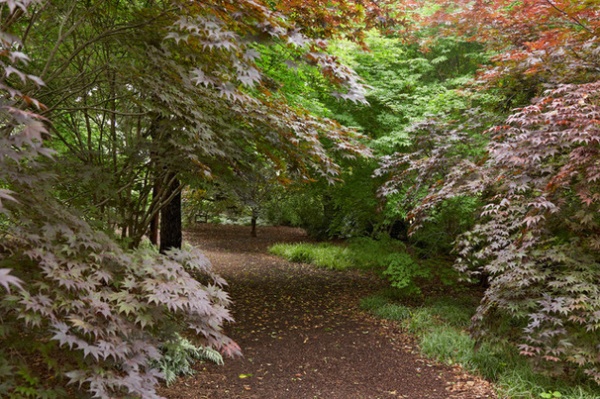
Up next: Building green hardscapes — the paths, beds and decks that define your landscape plan.
More Building Green: How to Plan Your Site for Healthier Living | How Your Home Ties Into Its Community
Related Articles Recommended












